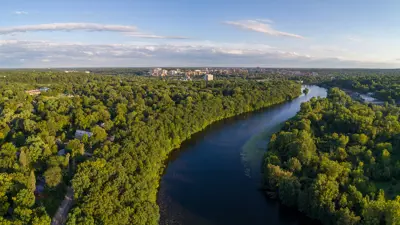Identifying Features:
- 2 to 2.5 inches long; dark mask through its eye and a white stripe on the upper lip.
- Fairly common in wooded habitats.
- Adults are rarely found in water except during breeding.
- Will migrate across open areas to reach suitable breeding ponds, but otherwise remain under tree canopy.
- Hibernate on land beneath loose soil, leaf litter, or decaying logs. They can survive sub-freezing temperatures by making large amounts of glucose. This causes ice to form in the extra-cellular spaces rather than within the body cells.
- Tadpoles approaching metamorphosis develop poison glands to repel aquatic insect predators. Their biggest threat, however, is ponds drying before transformation is complete.
- Adults have toxic skin secretions, which repel shrews, but not snakes, other amphibians or birds.
Call
- Squawking, duck-like call.
Breeding
- Vernal ponds, floodings, wooded swamps, and backwaters are used for breeding.
- Breeding season is usually only 1-2 weeks long, in mid to late March or early April.
- Females deposit from 500 to over 3000 eggs in one or many gelatinous masses. These are usually attached to plant stems or twigs near the surface.
- It is common for more than one frog to lay eggs in the same spot. This helps maintain moisture and temperatures and reduce predation.
Development
- Egg incubation depends on how hot or cold it is, ranging from four days to four weeks. Transformation occurs in 6-15 weeks.
- Large numbers of froglets disperse into the woods from late May through early July.
- Males reach sexual maturity in 1-2 years, females in 2-3 years.
Habitat Type
- Permanent wetlands.
- Forests.




 734.794.6627
734.794.6627

